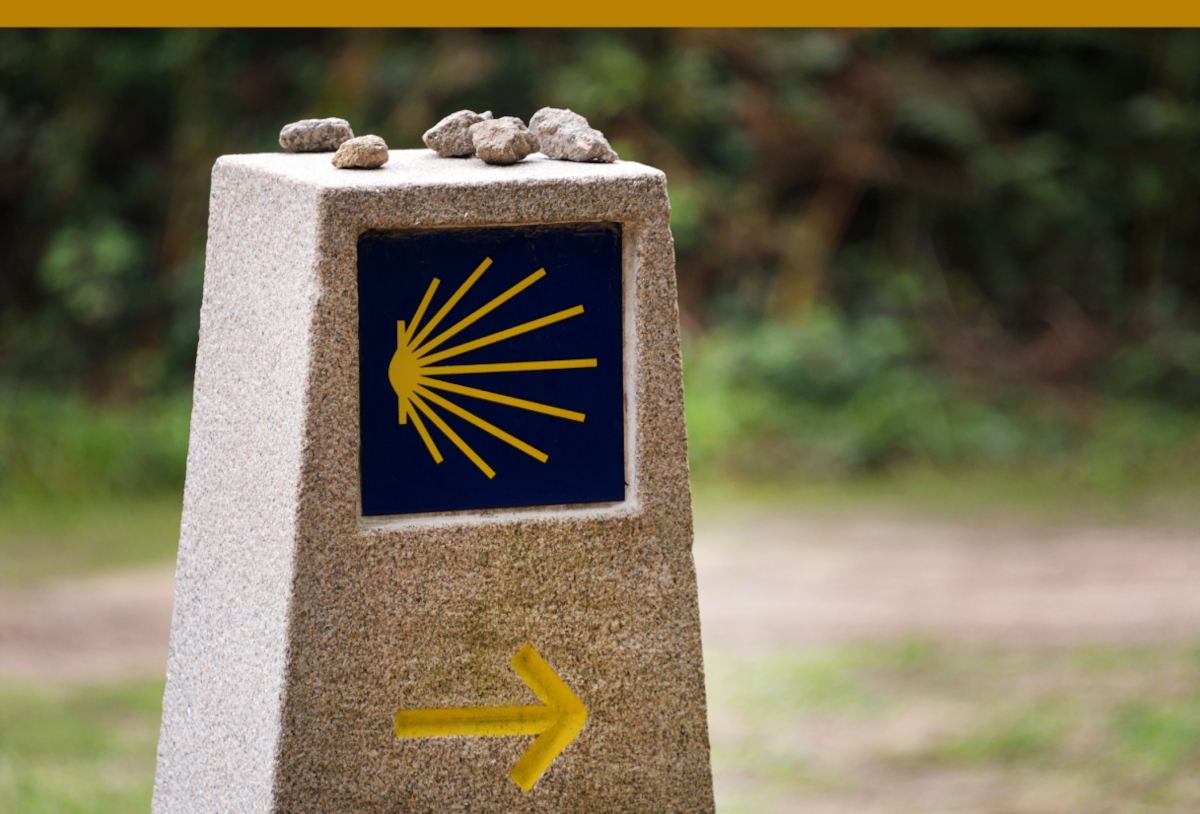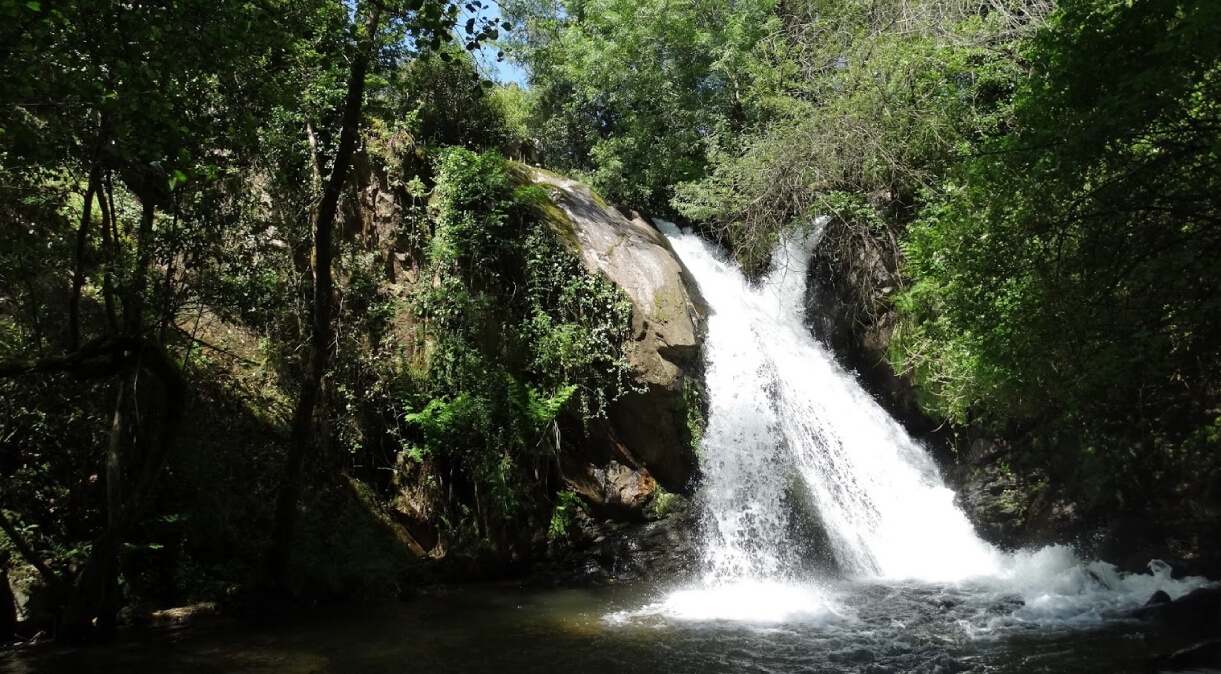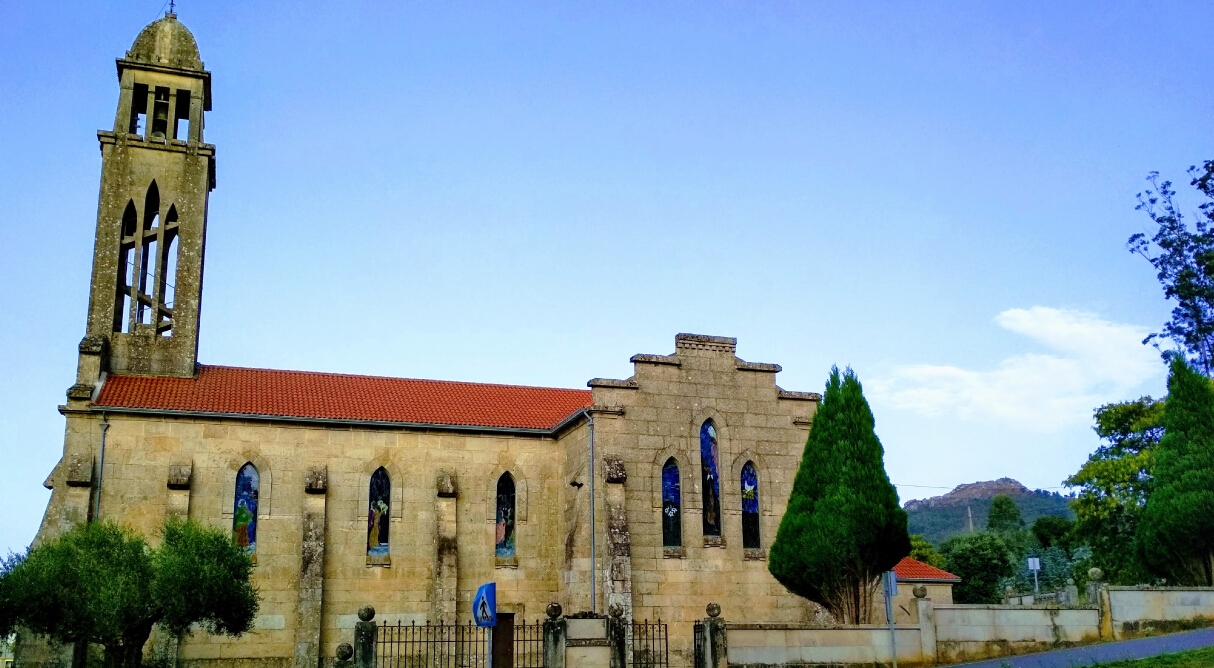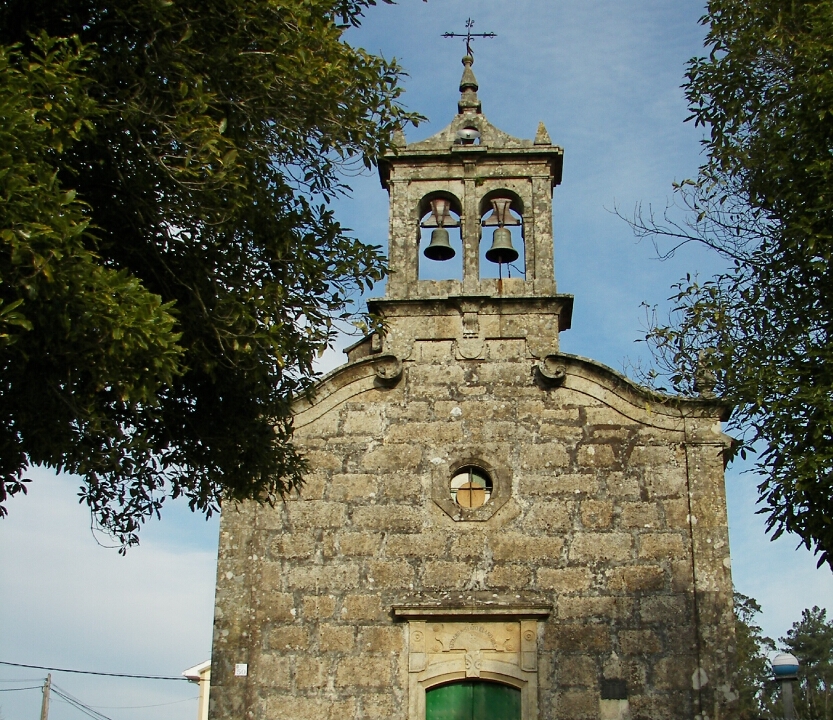OUR HERITAGE
OUR HERITAGE
In addition to its gastronomic product par excellence, Lestedo has a lot to offer visitors. It features unique natural, cultural, and historical heritage just a short distance from Compostela. Every year, thousands of pilgrims pass through Lestedo as they travel along the Vía de la Plata route. They are amazed when they see the iconic silhouette of Pico Sacro, while also stopping at some of the churches along the way or visiting the Interpretation Centre. Below are the places that stand out the most.
Cultural Heritage: the Camino de Santiago

Lestedo is one of the stopovers along the last stage of the Vía de la Plata route (Silleda-Compostela). Therefore, the Camino de Santiago plays an essential role, bringing added value to the unique nature of this parish in Boqueixón.
In fact, thousands of pilgrims travel along this itinerary every year. In order to cater for them, different improvements have been made to the local facilities, such as the rest area established beside Lestedo’s sports hall, where the large groups that usually pass by here in the summer months spend the night.
The Vía de la Plata is Galicia’s longest Camino route. It runs through the provinces of Ourense, Pontevedra, and A Coruña, and through nature sites of great beauty, featuring rich natural and cultural heritage. Due to its length, the Vía de la Plata route provides different accesses to Galicia from northeast Portugal, with the Sil basin being the traditional way of entering Galicia.

Natural heritage: Pico Sacro
Pico Sacro is the municipal district of Boqueixón’s icon par excellence. The writer Ramón Otero Pedrayo described it as “the most beautiful and symbolic peak in Galicia.”
This sacred hill dominates an enclave in which nature combines with history, legends, and traditional tales. Its pointed shape, its peculiar morphology featuring crystalised quartz rocks, and its height of almost 600 metres form an unmistakable silhouette, while offering one of the most extensive panoramic views in all Galicia.
Pico Sacro’s link to the tradition featuring St. James is very clear and included in the Codex Calixtinus. In fact, this enclave plays an essential role in the Traslatio journey, especially in relation to the myth about Queen Lupa when the Apostle James’ body was brought to Compostela.
Pico Sacro also hides the remains of a medieval fort that protected the approach to Compostela along the Vía de la Plata route, as well as the architectural treasures of the Chapel of San Sebastián, which was originally part of an old monastery from the year 912. More information is available for visitors in the Pico Sacro Interpretation Centre housed in the former rectory of Lestedo, in the village of Cachosenande, at the foot of Pico Sacro. There you can obtain all the information required to understand the genesis and historical evolution of this natural monument.

In addition to its extensive green landscapes, Lestedo also features another interesting nature site. Fervenza de Ramil is one of three waterfalls on the River Pontillón as it passes by Boqueixón, before flowing into the River Ulla. Located near the village of Ramil, the water falls from a height of 8 metres among granitic rocks, surrounded by the vegetation of a leafy riverside forest.

Historical Heritage: Religious Heritage

Lestedo’s historical heritage is directly linked to its Christian tradition and religious architecture. In addition to the remains of the medieval tower at the top of Pico Sacro, and of the Romanesque remains of the reconstruction in the 11th and 12th centuries, as well as the present-day Chapel of San Sebastián, Lestedo has another two interesting churches for visitors.
In the village of Rubial there used to be a small Romanesque parish church called Santa María de Lestedo. Unfortunately, due to its poor condition, it had to be rebuilt at the beginning of the 20th century. Therefore, on June 2, 1915, work began on the new church, with a Latin cross ground plan and large glass windows, being designed by the Compostela architect Jesús López de Rego in the Neo-Gothic style. This tall church features buttresses, semi-circular arches, tall pillars, ribbed vaults, and a large tower on its façade as its main characteristics. Its stained-glass windows date from 2005 and its interior features 3 altarpieces: the main one, and another two featuring St. Roque and Our Lady of El Carmen, respectively.
Located in Lestedo’s Campo da Festa (fairground) is the Chapel of Nuestra Señora de Lourdes. Its construction began in 1883 to make it easier for the locals to attend religious services on market days. Both its interior, with a hall ground plan, and its façade, featuring a simple circular window and belfry, reflect the classical, sober style of 19th-century historicism.
Completing the parish of Lestedo’s religious heritage are four stone crosses, all made from granite and featuring figures of the crucified Christ and Our Lady. They are located in the villages of Rubial, Pazos, and Cachosenande, in addition to the one in the fairground known as “Cruceiro da Feira.”

